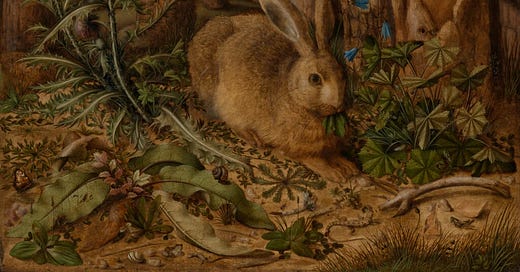On Escapism, and the Quiet Power of Art
Why We Turn to the comfort of Art When the World Feels Too Much
To be occupied or lost in literary things—sometimes it feels like an escape. An escape from the grotesque reality that waits baring its fangs outside. So you sink back into your head, into a book, a poem, a song. And try to belong to the carefully crafted lie.
You call it beautiful. You say it’s more than a clever arrangement of words. And perhaps it is—something of the earth, something of creation. Something that elevates the mind, the thinking, and eventually, the possibilities that surround you.
But still, it is also the escape. From the grossest realities. The unfinished business of life that growls in the background while you dive into someone else’s vision. The world of ideas and beauty, conceived by someone, for anyone who pays attention. It feels noble. But sometimes it’s just easier. Safer.
This is the fundamental conflict for some of us. It feels like addiction. Not to pleasure, but to refuge. A habit of turning inward. Of seeking meaning elsewhere. A persistent aversion to the sharpness of reality.
But is it as simple as that?
Are art and literature just another drug? Is the reverence we offer them simply a more articulate form of avoidance? Sometimes, the structure of our thoughts—this tension between confession and justification—starts to resemble the rationalizations of addiction. A beautiful story we tell ourselves about why we can’t look away.
So the question becomes: is this explanation a genuine understanding of the power of art? Or is it comfort dressed as clarity—something we use to keep retreating?
Here’s the complication: both can be true at once.
Art can be an escape. Sometimes a harmful one. It can isolate. It can feed detachment. It can become a mechanism for avoiding pain, conflict, growth. The idea that literature makes us ‘better’ can become a kind of vanity—or a defense against responsibility.
But at the same time, art also opens things. It holds complexity. It metabolizes feeling. It sharpens perception and nourishes empathy. It’s not just a high—it’s also a tool. Sometimes a mirror. Sometimes a form of mourning. Sometimes a way back to life, not away from it.
So maybe the issue isn’t with art itself—but with how we use it.
And maybe the real question is not ‘Is this escape or insight?’ but ‘What does it do to me when I return?’ Do I come back with more gentleness, more clarity, more willingness to engage? Or do I come back numb, defended, remote?
If it’s always the latter, then yes—there’s cause for concern. Then it does start to resemble addiction. But if even sometimes it brings us closer to the world, rather than further from it, then perhaps it’s not a lie. Perhaps it’s a practice. A way of staying human in a world that often feels otherwise.
Because while art offers refuge, it’s not numbness—it’s a charged kind of retreat. A place where feelings are distilled. Where we process what’s too subtle or too large for everyday life. You’re not just hiding from the grotesque. Sometimes, you’re understanding it better—from a safer distance. Sometimes, you’re preparing for it.
The world of art isn’t just a fantasy—it’s an interpretation. And that interpretation, however delicate or grand, was made by someone who lived, feared, failed. That makes it human. Maybe it’s not escape, but alignment. You find yourself in those lines, and then bring something back. Even if what you bring back is just the strength to carry on.
Art and literature are not lies. They are dreams laid out with precision. Possibilities made solid, for a moment. They sketch the outline of a world that might be. Not perfect, but bearable. Not real, but reachable.
And that’s why we keep coming back.
Not because it always saves us. But because it reminds us what feeling alive could look like—even if only for the duration of a poem. Or a song. Or a trilogy.




